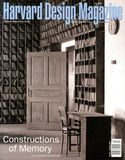I begin with a confession: the first city I ever visited, outside of that big-shouldered metropolis close to my suburban Chicago home, was Walt Disney World.
At least, the Florida theme park seemed like a city. Thronged with people, the monorail whisking overhead, the place had not only multistory “modernist” hotels but also a “historic” Main Street that, while not authentic, resonated with more age and mystery than did the equally contrived mansard-roofed discount stores and chock-a-block strip malls that crowded the entrances to the fancifully named subdivisions that comprised my suburb. The year was 1974, long before New Urbanism was even dreamed of, long before Celebration, Florida, was planned, even before EPCOT, Disney’s “Experimental Prototype Community of Tomorrow,” was constructed. Beyond the Magic Kingdom, America was still learning from Las Vegas, muddling between yesterday and tomorrow, city and country, struggling in the uncertain times of defeat in Vietnam, the oil embargo, and recession. If Disney was dystopia, nobody told me it could be so much fun.
To my childhood imagination, Disney World was “almost all right,” as the authors of Learning from Las Vegas insisted of the suburban strip, even if I already knew I did not much care for either the “duck” or the “decorated shed” back home.1 There was implied urbanism at Disney, a walkable scale whose only parallel in my youthful experience was a shopping mall; for a decentered age, it seemed to provide a center. There was also a strange mix of fantasy and safety; one could create a narrative, one could get lost, but lost safely, and then find one’s way “home” to the comfort of the Polynesian Village Hotel for dinner. I knew it was not a real city—no more than the now-shuttered “Old Chicago” amusement park, which offered a turn-of-the-century version of its namesake, or than the recreated Main Street housed in Chicago’s Museum of Science and Industry, said to have inspired Walt Disney—but whatever it was, it was no more or less real than the other instruments of fantasy (comic books, science fiction movies, toy soldiers) I had at my disposal.
Over time I would learn to accept the received ideas of the school of Disney criticism, renouncing the site of my childhood fantasies as culturally bankrupt, homogeneous, soul-destroying—it was a wonder I made it out alive. Disney World has been subjected to the full range of critique available to modern social science, from the absurdist hyperbole of French intellectuals to the Middletown rigor of Duke University’s “The Project on Disney.” In retrospect, however, what is most striking about the Disney discourse is its intensity of feeling—as intense, albeit in an opposite cant, as my own childhood fantasies. “It would be difficult to overestimate the importance of Disneyland in the American imagination,” writes Alexander Wilson in The Culture of Nature.2 It would certainly be hard to overestimate its importance in my childhood imagination, and equally difficult to overstate Disneyland’s importance in the imagination of American (and global) cultural critics. For nearly half a century, Disney’s places, as much as its films, have been the specter haunting—and enchanting—America. As Greil Marcus notes, “[S]omething in the Disney parks, if not Disneyism as such, brings out not necessarily the best or the worst but so often the most in people—it strips them bare, reduces them to babble or prompts curses and slurs.”3 The antipaeans to Disney, in prose by turns fevered, suspicious, and downright apocalyptic, bring to mind the question asked by the authors of Learning from Las Vegas in response to the heated, elegiac style of the critics of strip-mall suburbia: “If it is so bad, why is it so inspiring?”
[…]
